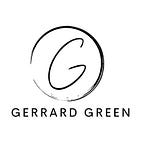Where to find the best Resume Outline Examples.
When you create a resume for a specific job, a resume outline helps you keep all your professional information in one place so that you don’t miss out on adding relevant information to the resume.
The best resume outline refers to a document that consists of the skills, accomplishments, and education you have attained. It is a tool that can be used to impress employers on paper, so you are more likely to get hired. Many job applicants create their resume outline before creating their formal resume. Avoid mistakes by using professional resume templates.
How to Create a Resume Outline?
Before creating a resume outline, read the job description carefully and understand what information to add to the resume. You need to customize the resume outline based on the job you’re applying for. Online resume builders are really helpful when considering the right resume outline.
1. Brainstorm Sections
Before writing the resume outline, read the job description and identify the main sections you want to include in the resume. It will also depend on your experience. For example:
If you are a fresher, follow the below-given section in order to make your resume:
- Resume Header
- Objective Statement
- Internships
- Education
- Honors & Awards
- Community/Campus Involvement
- Volunteer Experience
- Additional Information
If you are an experienced professional, follow the below-given section in order to make your resume:
- Resume Headline
- Summary Section
- Professional Experience Section
- Training & Certifications
- Education Section
- Honors & Awards Section
- Extra-curricular or Co-curricular Section
- Additional Information
- References
2. Think of the Best Format for a Resume Outline
The next step is to see which format you’ll use to create the resume outline. There are three resume formats available in the industry.
If you are an entry-level professional or have a consistent track record of work, use the reverse-chronological format.
If you have a career gap or switch careers, use the functional resume format.
If you have highly specialized skills or are fresher, use the combination resume format.
The source of citation is can be found, (2022), Online: hiration.com/blog/resume-outline/
If you enjoyed this article, you might also like:
